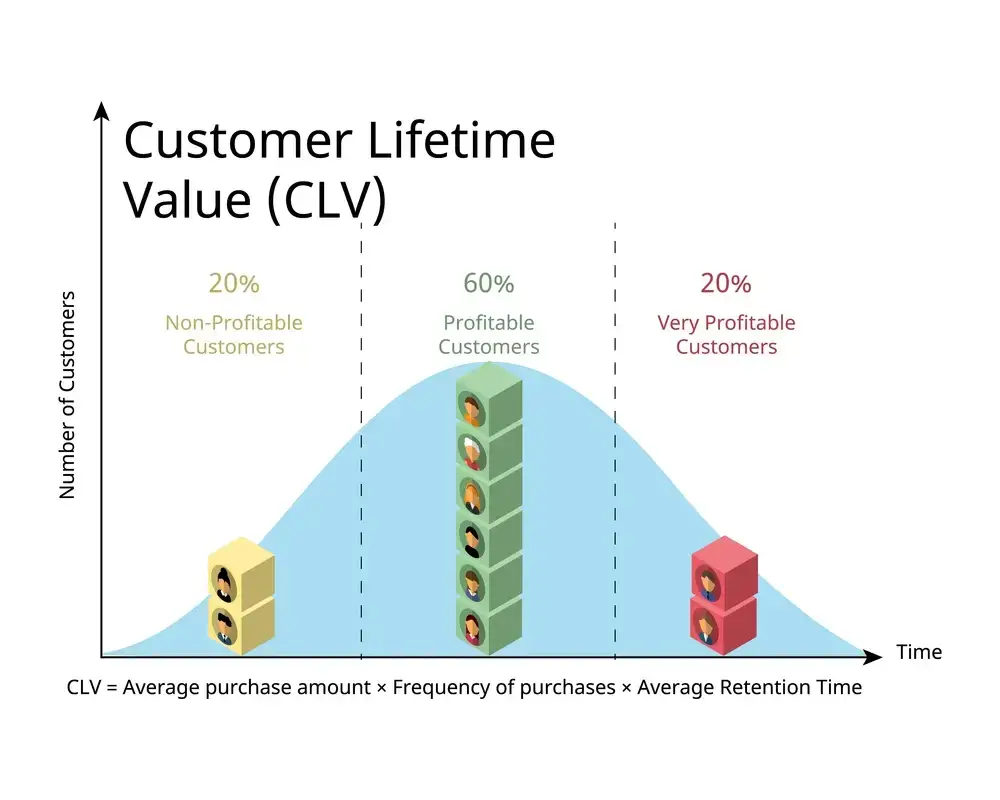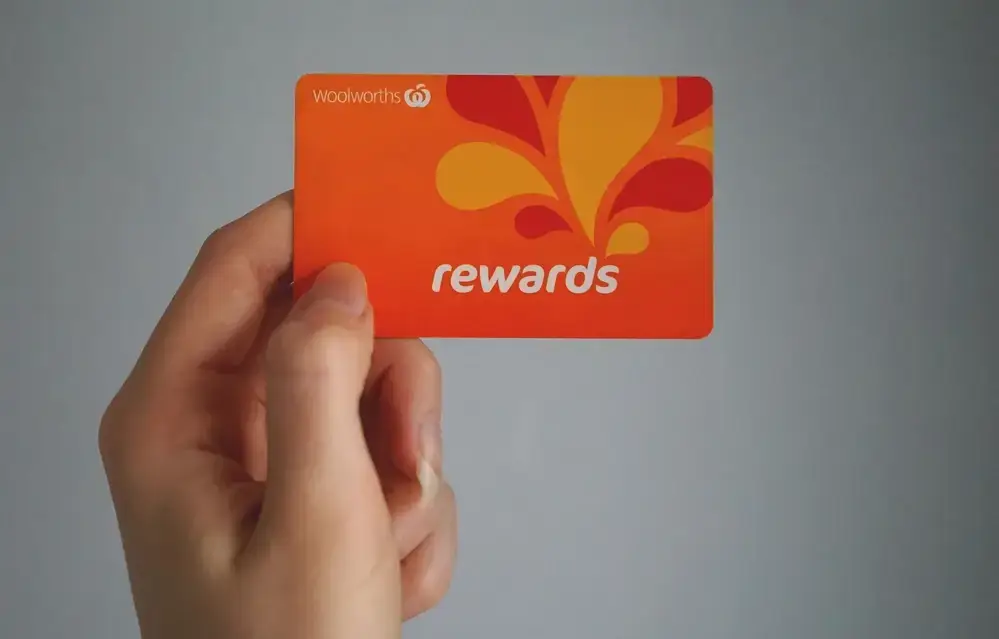Ever wonder why some companies have customers that stick around for years, while others can’t retain them?
It’s a question that keeps many business owners up at night, staring at the ceiling.
You might think it’s the quality of the product, the effectiveness of the sales pitch, or maybe just luck.
But often, it’s something a bit less flashy but far more enduring:
Customer Lifetime Value, or CLV or CLTV for short.

You see, retaining a customer isn’t just a one-night stand; it’s a long-term relationship.
The longer that relationship lasts, the more valuable it becomes.
When you increase CLV, you’re not just squeezing more juice out of an orange.
You’re planting an orchard.
Imagine, not just one transaction, but dozens over several years.
Now you’re cooking with gas. Or solar energy, if you’re into that.
A higher CLV means not only more sales, but it also often equates to brand loyalty, word-of-mouth recommendations, and, dare we say it, a simpler life for you as a business owner.
Higher CLV means more revenue without the exhausting effort of constant customer acquisition.
No need to be the Don Juan of the business world, always looking for the next big score.
Instead, you can be the dependable friend who knows exactly how to keep the good times rolling.
So, ready to get serious about CLV?
Let’s explore the ten simple ways to make your customers not just love you, but stick around for the long haul.
How to increase customer lifetime value – 10 ways
So, you’re convinced that CLV is the golden goose — or at least a very dependable chicken.
Great. Now let’s talk strategy.
These aren’t pie-in-the-sky concepts; they’re actionable tactics you can start implementing today.
1. Personalisation strategies
We’re not talking about just throwing their first name in an email and calling it a day.
This is about using data to offer relevant products, tailor the shopping experience, and even adjust pricing and promotions.
A customer who feels understood is a customer who’s more likely to return.
Implement recommendation algorithms on your site to suggest items based on browsing history.
Practical ways to add personalisation:
- Example 1: Use behavioural triggers to send automated emails. If a customer frequently buys pet supplies, alert them when there’s a new dog toy in stock.
- Example 2: Employ AI chatbots that can remember past interactions and make relevant product suggestions.
- Example 3: Use analytics tools like Google Analytics to segment your audience based on behaviour, and serve personalised content accordingly.
- Example 4: Implement AI-powered tools for real-time customisation of your site based on people’s behaviour.
That’s personalisation doing the heavy lifting, and it can work wonders for your CLV.
2. Quality customer service
This is the bread and butter.
Ever notice how you’re more likely to return to a place where they remember your name — or at least, don’t make you repeat it ten times?
Train your support team to solve issues effectively and promptly.
Go a step further and add a human touch by following up to see if the problem was resolved to the customer’s satisfaction.
Practical ways to improve customer service:
- Example 1: Implement live chat support on your website to address issues in real-time.
- Example 2: Use a Customer Relationship Management (CRM) system to keep track of past conversations or interactions. This’ll help your support team always have context.
- Example 3: Consider using Zendesk to streamline customer service workflows and responses.
- Example 4: Implement AI-based support bots for common questions, freeing up human agents for more complex issues.
3. Loyalty programs
Forget generic, one-size-fits-all loyalty cards.
Create a program that actually rewards spending and engagement in a meaningful way.

Think beyond discounts — what about early access to new products or a small freebie added to their order after a certain number of purchases?
Make it worthwhile, and they’ll stick around.
Real examples of how to use loyalty programs:
- Example 1: Implement a point-based system where purchases equate to points and points equate to discounts or freebies.
- Example 2: Use a ‘tiered’ loyalty program that provides increasingly valuable rewards as customers climb the ranks.
- Example 3: Leverage tools like Smile.io to create custom loyalty programs that integrate directly with your eCommerce platform.
- Example 4: Use gamification techniques to make loyalty engaging. Apps like Mambo.IO can help here.
4. Tailored communication
Nobody wants to be shouted at, especially not by their inbox.
Segment your customer base and communicate based on behaviour and preferences.
Did they abandon a cart?
Send a tailored message with an incentive to complete the purchase.
Just browsed a category?
Follow up with relevant product info.
A well-timed, relevant message is music to a customer’s ears.
Here are ways to tailor your messaging:
- Example 1: Craft abandonment cart emails with a personalised touch, perhaps mentioning the specific products left behind.
- Example 2: Send out birthday or anniversary emails with a special offer attached.
- Example 3: If you own a hotel, send automated welcome emails on arrival or SMS/Whatsapp that makes the guest feel heard.
- Example 4: Use tools like GoHighLevel for conversational marketing, guiding customers through their journey in a more personalised manner.
5. Value-added services
If you’re just selling a product, you’re missing out.
Offer tutorials, how-to guides, or even an online course that complements your product.
This extends the value of their purchase and increases engagement.
In other words, you’re giving them another reason to keep coming back to you.
A report by Accenture found that customers who receive personalised recommendations from their service providers are 75% more likely to be satisfied and 58% more likely to be loyal.
How to implement value-added services:
- Example 1: If you sell kitchen gadgets, offer an online cooking class using your products.
- Example 2: For software products, provide free templates or guides as downloadable resources.
- Example 3: Create how-to guides or eBooks using tools like Canva and offer them as free downloads.
- Example 4: Use webinar platforms like Zoom or WebinarJam to host live tutorials or Q&A sessions.
6. Customer feedback loops
So you think you’re doing everything right?
Let’s confirm that with some good old-fashioned customer feedback.

Use surveys, or even better, direct interviews to uncover pain points.
It’s like having a map where X marks the spot for improvement.
How to ask for customer feedback:
- Example 1: Post-purchase, ask for customer feedback using a short and easy-to-fill survey.
- Example 2: Organise quarterly focus groups with select customers to discuss potential improvements.
- Example 3: Tools like SurveyMonkey or GoHighLevel can be very helpful for creating quick and easy customer surveys.
- Example 4: Use Uservoice or similar platforms to allow customers to vote on potential new features or improvements.
7. Optimised onboarding
First impressions matter. A lot.
According to studies, people who have a positive onboarding experience are 76% more likely to stay with a service.
Make the onboarding process for your product or service as smooth as butter on a hot skillet.
Offer video tutorials, step-by-step guides, or even a welcome phone call.
Confused customers become former customers.
Don’t let that happen.
How to improve your onboarding process:
- Example 1: For SaaS products, offer an interactive tutorial as part of the initial login experience.
- Example 2: For physical goods, include QR codes in the packaging that link to how-to videos.
- Example 3: Use a service like Appcues for in-app walkthroughs to help new customers understand your software’s features.
- Example 4: For physical products, utilise services like BILT to provide interactive, 3D, step-by-step assembly instructions.
8. Regular updates and improvements
Nothing says, “We value you,” like a shiny new feature or a problem-solving update.
Regular improvements don’t just keep your product fresh; they give you something to talk about with your customers.
It’s like saying, “Hey, we’re still here and getting better for you.”
A survey by HubSpot revealed that customers who receive monthly or quarterly reports from their service providers are 33% more likely to refer others and 44% more likely to expand their spending.
Ideas for regular updates:
- Example 1: Send out a monthly newsletter to all customers highlighting any new features or improvements made to your product.
- Example 2: Share ‘behind-the-scenes’ videos of how you’re making your products or services better.
- Example 3: Use platforms like Intercom to communicate real-time updates to your customers right within your app.
- Example 4: Post update logs or changelogs on your website and promote them through social channels.
9. Exclusivity offers
We all want to feel special.
Offer exclusive promotions or first-looks at new products to existing customers.
It’s the business version of whispering sweet nothings in someone’s ear, and it’ll make your customers feel like VIPs.
Exclusivity offer ideas:
- Example 1: Provide early access to sales or new product launches for customers who’ve made more than a certain number of purchases.
- Example 2: Offer exclusive bundles or packages that are only available to returning customers.
- Example 3: Use platforms like Intercom to communicate real-time updates to your customers right within your app.
- Example 4: Post update logs or changelogs on your website and promote them through social channels.
10. Community building
This isn’t about forming a cult.
It’s about creating a space where your customers can interact, share tips, or showcase how they’re using your product.
This not only deepens their connection with your brand but can also provide you with invaluable insights and free marketing through user-generated content.
In fact, according to a study by Harvard Business Review, people who join a brand’s online community spend 19% more than customers who do not.

How to do community building:
- Example 1: Create a branded hashtag and encourage customers to share photos of themselves using your product.
- Example 2: Build a forum on your website where customers can ask questions, share tips, and provide product feedback.
- Example 3: Consider using community-building platforms like Skool or Circle.so to create an exclusive space for your customers.
- Example 4: Organise virtual meetups using tools like Meetup.com, where people can share their experiences and tips.
How Companies Raised Their CLV
We’ve talked strategy; now let’s see it in action.
These brands didn’t just stumble upon higher CLVs; they hustled, and it paid off. Big time.
Apple: ‘Hey Siri, increase our CLV!’
Apple’s secret sauce? They listened.
Yes, actually listened to customer feedback.
Remember the “Customer Feedback Loops” we talked about? Apple nailed it.
They’ve also managed to offer a unified experience across all their devices.
BrandZ places Apple’s CLV at about $351, and let’s be honest, once you go Apple, you kinda stick around.
Starbucks: more than just a coffee shop
Starbucks nailed the “Loyalty Programs” and “Personalisation Strategies.”
They’ve got your name on your cup and a mobile app that knows just how you like your Mocha Frappuccino.
That personal touch and rewards program keeps you coming back for more than just caffeine.
According to Bond Brand Loyalty, Starbucks boasts a CLV of around $14,099.
Yes, you read that right.
That’s a lot of lattes, and it beats Dunkin’ Donuts and McDonald’s by a long shot.
Netflix: all about that content, baby
Netflix isn’t just a platform; it’s a content juggernaut.
Forget about dishing out bells and whistles.
They invested in original and diverse content that we all binge till 3 AM (guilty).
By doing this, Netflix embodies our strategy of “Value-Added Services” to the hilt.
According to McKinsey, Netflix’s CLV is about $291, towering over competitors like Hulu and Amazon Prime Video1.
FAQs about CLV
What’s the ideal CLV for my industry?
Okay, don’t shoot the messenger, but there’s no one-size-fits-all answer here. CLV can vary wildly depending on your industry, business model, and customer base. The key takeaway? Always aim to improve. Compare your CLV against industry benchmarks or your own historical data. But please, no comparing apples to oranges.
Is CLV more important than other metrics?
CLV is like the quarterback of customer metrics—important, but not the whole team. Metrics like Customer Acquisition Cost (CAC), Net Promoter Score (NPS), and even good ol’ revenue are also critical. CLV gives you a long-term view, but don’t get tunnel vision and ignore the rest of the game.
How often should I review my CLV?
In the words of the great philosopher, DJ Khaled, “Another one.” Yeah, regularly review your CLV. Quarterly is a good starting point, but the more granular you get—say, monthly—the more actionable insights you can derive.
Piecing it all together
The path to pumping up your CLV involves a medley of strategies, from personalised touchpoints to cleverly crafted loyalty programs and everything in between.
It’s not about getting it perfect right out of the gate but committing to constant improvement.
Data is your friend here, so use it to iterate, iterate, iterate!
That said, boosting CLV isn’t a one-time event; it’s an ongoing commitment to customer excellence.
Because let’s be real: a business that doesn’t put its customers first is like a Netflix series that got cancelled mid-season — forgettable.
Make your story one worth sticking around for.

